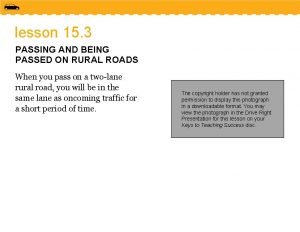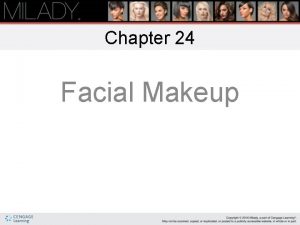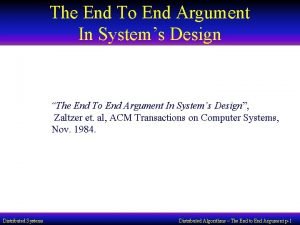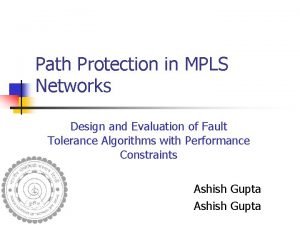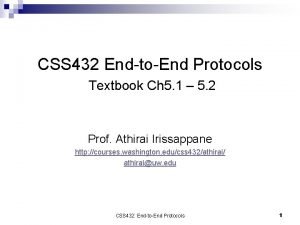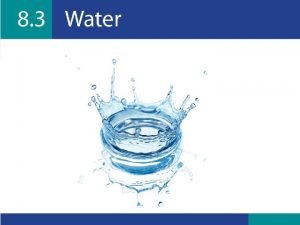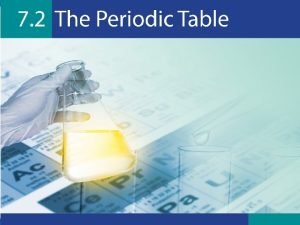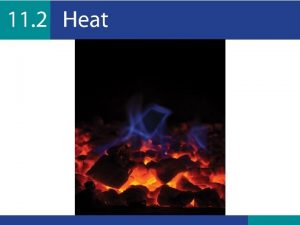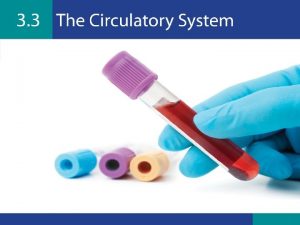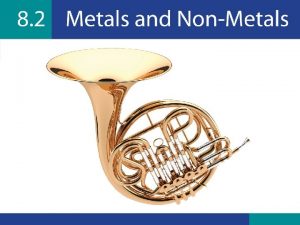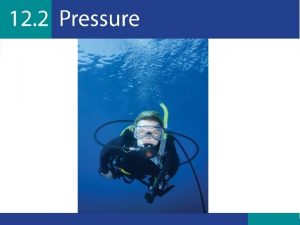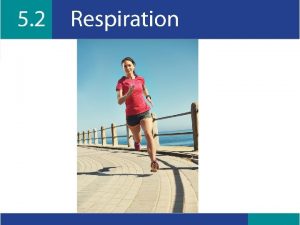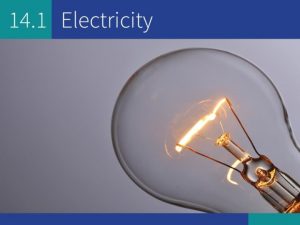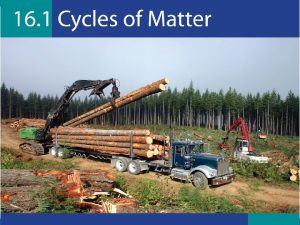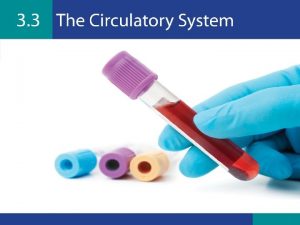At the end of this unit you should














































- Slides: 46


At the end of this unit you should: 1. Be able to name the food groups and list sources of each group. 2. Know the functions of the food groups. 3. Be able to recognise and understand the importance of a balanced diet. 4. Be able to recognise and understand the consequences of an unbalanced diet. 5. Be able to describe how to select foods from a food pyramid. 6. Be able to discuss our changing energy and nutritional needs at different stages of life. 7. Know how to read a food label and recognise the nutritional values on the label. 8. Understand that certain factors, including lifestyle, can affect and influence our food and drink choices.

artificially environmental natural balanced fats nutrients calories healthy nutrition carbohydrates inherit obesity cholesterol joules preservatives converted lifestyle proteins diet micro-organisms respiration digestion minerals vitamins well-being

LIGHTBULB QUESTION A healthy lifestyle is one whereby a person has a balanced diet and includes exercise in their weekly routine.

Nutrient: An essential substance for our bodies to function properly. Nutrition: A process where an organism gets its energy from its surroundings. Digestion: The process of breaking down food.

Respiration: The release of energy from food. Lifestyle: A particular way a person lives their life. Well-being: A state of being content and healthy.

Will the food you have eaten today provide you with a good level of nutrients? Would you change your food choices in anyway? Some things to consider: Which nutrients are present in your food choices? Do you have a balance of nutrients in your food choices? Why have you chosen these foods – nutrition/taste/convenience? Example: I had two slices of toast with butter for breakfast. This has provided me with carbohydrates and fat. It is lacking in protein, vitamins and minerals. I would change my choice and add a poached egg and a glass of juice/ piece of fruit in order to balance out my meal.

THE FOOD GROUPS Protein Functions: Growth and repair of cells Fat Functions: Stores energy and provides insulation Carbohydrate Functions: Provides energy Vitamins Functions: Keep the body’s systems working Minerals Functions: Help the body to stay healthy

Simple Carbohydrates: Give a quick release of energy in the body. Complex/Starchy Carbohydrates: Give a slow release of energy in the body.

(a) List the food groups that provide the essential nutrients for survival and the function of each group. Food group Carbohydrates Protein Function Provide energy for the body Growth and repair of body cells Fats Needed to produce antibodies & enzymes Store of energy Insulation / warmth Vitamins and minerals Protects body organs Vitamins: Keeps the body systems functioning Minerals: keeps bones and teeth strong. Helps to clot blood

(b) Deficiency of which food group can result in tiredness? Minerals. (c) Why is water included in the food groups table? It is essential for life and present in most food groups. (d) What is the result of a lack of fibre in the diet? Constipation.

(e) List the sources of protein and carbohydrates you eat most often, dividing your list of carbohydrates into starch and sugary foods. Protein: Meat, eggs, milk, cheese, beans Carbohydrate: Bread, pasta, rice, cereal, potatoes, cakes, biscuits, jam, chocolate, sweets (f) Which type of carbohydrate releases energy into your body slowly and therefor keeps you fuller for longer? Complex or starchy.

(g) Which of the fats are better for you to eat? Unsaturated fat.

Describe how peer pressure affects the food choices young people make and the physical activities they take part in. Points that could be included: • Eating what friends eat, getting nagged for eating healthy food • Buying sweets with friends instead of something else • Only taking part in activities that friends do • Not going to sporting events or training as friends won’t think its cool and they might lose friends if they go

(a) Write a short paragraph describing the energy requirements needed for the following stages in the life cycle, giving reasons to support your choices and comparing the requirements between all three stages: (i) A baby learning to crawl and walk. A baby will not require that much energy as they are only crawling and learning to walk. Their physical activity level is low.

(a) Write a short paragraph describing the energy requirements needed for the following stages in the life cycle, giving reasons to support your choices and comparing the requirements between all three stages: (ii) A child who goes to school and plays with their toys when they get home. A young child’s energy requirement will be higher than that of a baby as they are generally physically active all day, and mentally active at school.

(a) Write a short paragraph describing the energy requirements needed for the following stages in the life cycle, giving reasons to support your choices and comparing the requirements between all three stages: (iii) A teenager who goes to school, has music practice after school and goes to scouts in the evening. The energy levels of a teenager are generally very high, higher than that of a baby’s or a young child’s, as they are active for longer in the day and in the evening. Their learning in the classroom requires more energy than that of the child as they are required to be more engaged in the classroom. To note: The more active you are, the more energy you need.

(b) (i) What is the difference in energy requirements of the following three people: • A young person sitting exams • A young sports performer • A young person who plays video games in the evenings 1. The person playing video games would have the lowest energy requirements, as they are not as active. 2. Next would be the person sitting the exams, as they need a moderate level of energy. Sitting exams is actively engaging the brain and recalling information that has been learned and therefore needs energy. 3. The sports performer would need the highest amount of energy as they are physically engaged, with their muscles requiring a high amount of energy to function.

(b) Using Table 02. 01, answer the following questions: (ii) Of these three people, who needs to eat more? Who needs to eat less? The sports performer needs to eat the most; the gamer needs to eat the least.

(a) Looking back at Fig. 02. 01. 12, give a brief explanation of the amount and type of carbohydrates found in this food. The amount of carbohydrates is 85. 2 g per 100 g or 31. 7 g per serving with semi-skimmed milk. Of this amount, 9. 7 g per 100 g or 9. 0 g per serving with semi-skimmed milk is from a sugarbased carbohydrate. There is also fibre in the food: 1. 5 g per 100 g or 0. 69 g per serving.

(b) You have been asked to carry out a nutritional analysis of the following three foods to determine their nutritional value. (i) Analyse these foods’ labels, including a bar chart in your analysis. Consider carefully what headings to use and how to present your findings. Headings: groups, energy value of the food, highest and lowest energy provider, and any additional information deemed suitable. Two options regarding bar chart: the amount of each main food group provided in that food (‘Food Group analysis per 100 g’), or the total amount of energy provided (‘Total energy provided’). Note on total energy graph: The function of carbohydrates is to provide energy but that the carbohydrates can be sugar-based and starch-based.



(b) You have been asked to carry out a nutritional analysis of the following three foods to determine their nutritional value. (ii) Extend your work by comparing your findings against those of other students. Are some of them similar? Yes, some of the findings are similar as we are all looking at the same labels, although everyone is doing a different type of analysis it is easy for us to tell which label is the most nutritious and which is the least.

(c) Using the information you have gathered on food labels and nutritional values, discuss the following opinion and put forward your views. • ‘Enjoying a healthy diet is simply about getting the balance and choices right. There are no unhealthy or even healthy foods. It is rather a question of a healthy or unhealthy diet. ’ Unhealthy foods will be deficient of the good nutrients needed by the body’s systems. An unhealthy diet will have a combination of the wrong carbohydrates and the wrong fats. An unhealthy diet may also lead to low consumption of foods that provide vitamins and minerals needed to keep the body functioning. In comparison, a range of healthy food will contain all the nutrients that our body needs, and both fats and carbohydrates from healthy sources will release energy more slowly and so delay the onset of hunger.

Preservatives: Artificial additives which prevent food spoilage.

A BALANCED DIET A balanced diet should include: • A variety of foods from each of the levels of the food pyramid • Foods that are low in fat (especially saturated fats), sugar and salt • At least five portions of fruit and vegetables daily • Plenty of water – approximately 2 litres a day

A BALANCED DIET

(a) What are food additives? Food additives are substances that can be both naturally and artificially made and used in a food to help preserve, keep the nutrient value, add flavour, enhance colour and improve the taste or texture of that foodstuff. (b) Name some natural food additives. Vinegar, herbs, spices, salt and some sugars.

(c) In pairs or individually, put together a daily menu for a student comprising breakfast, lunch, dinner and snacks. Aim for a nutritionally balanced menu. When your menu is complete, give a brief explanation as to why you have chosen the foods that you have. Have you kept an eye on portion size? What is the function of each food you have suggested?

(a) Complete this sentence: ‘In my opinion, an unbalanced diet is …’ A diet that contains a large amount of foods that do not contain all the nutrients needed for our daily activities.

(b) Why do you think the scales are tipped as they are in Fig. 02. 01. 16? Make a list of your points. The scales are tipped in favour of the healthy meal as this meal contains a greater and more balanced range of the nutrients, including vitamins and minerals, needed for an overall healthy diet. The fast food meal contains very little of the nutrients needed to maintain good health, and over time will contribute to poor health. The scales are tipped in favour of the more balanced, nutritious meal.

(c) Using the food pyramid in Fig. 02. 01. 14 (a), draw what you think an unbalanced pyramid might look like.

(d) What can an unbalanced diet lead to? An unbalanced diet can lead to weight gain and occasionally disorders of the body’s systems, as the nutrients needed for the body to function properly are low or absent.

Copy and Complete In this unit I learned that making the right lifestyle choices is important. We need to eat food to release energy in our cells that will allow us to carry out daily activities. The food we eat during the day must be from a variety of food groups such as carbohydrates, proteins, fats, vitamins and minerals. This ensures that we eat a balanced diet that will keep us healthy. Carbohydrates are found in bread and pasta and they give us energy. Proteins are found in eggs, meat and milk and help our cells to grow. Healthy, unsaturated fats are found in olive oil, nuts and oily fish. They are important as they keep our bodies warm and our organs protected.

Copy and Complete Vitamins and minerals are found in fruits and vegetables. They are really important as they help our organ systems to work. A food label is found on all the packaged foods we eat and it tells us what is in the food, and how much energy that food will give us. This then helps us eat a balanced healthy diet and take in the energy that we need. Taking in more food than we need can result in weight gain so the portion size of the foods we eat is also important. Some foods have additives and preservatives added to them to make them look appealing.

1. Copy Table 02. 01. 02 and fill it in using the information you learned in this unit. FOOD GROUP FOOD /NUTRIENT SOURCE(S) FUNCTION EFFECT ON HEALTH IF NOT ENERGY VALUE (IF KNOWN) PRESENT IN DIET Protein Vitamins Meat, eggs, milk, fish, pulses Growth and repair of body cells Green veg, meat, eggs Keep the body Vit. D = Rickets Low amount of systems functioning Vit. C = Scurvy energy Vegetables, fruit Cells are not replaced Low amount of energy Needed to produce Illness as antibodies and antibodies not enzymes produced

1. Copy Table 02. 01. 02 and fill it in using the information you learned in this unit. FOOD GROUP FOOD /NUTRIENT SOURCE(S) FUNCTION EFFECT ON HEALTH IF NOT ENERGY VALUE (IF KNOWN) PRESENT IN DIET Fats Minerals Nuts, fish Store of energy oils, butter, Insulation/warmth crisps, cakes Protects body organs Cold quicker Red meat, Keep bones and fish, dairy teeth strong products, Help to clot blood some cereals Weak bones Poor vitamin uptake Anaemia Moderate amount of energy Low amount of energy

1. Copy Table 02. 01. 02 and fill it in using the information you learned in this unit. FOOD GROUP FOOD /NUTRIENT SOURCE(S) FUNCTION EFFECT ON HEALTH IF NOT ENERGY VALUE (IF KNOWN) PRESENT IN DIET Carbohydrates Bread, pasta, Provide energy for rice, cereals, the body sweets, chocolate Fibre Low energy amounts Fruit and veg, Maintains a healthy Constipation lentils, digestive system wholegrain bread or rice High amount of energy

1. Copy Table 02. 01. 02 and fill it in using the information you learned in this unit. FOOD GROUP FOOD /NUTRIENT SOURCE(S) FUNCTION EFFECT ON HEALTH IF NOT ENERGY VALUE (IF KNOWN) PRESENT IN DIET Water Fruit and vegetables Hydrate the body Headaches Feeling of tiredness Low amount of energy

2. Which of the following people (all of a similar height and age) needs the most energy, and why? An artist • a builder • a teacher • a shopkeeper The builder needs the most energy: builders engage in manual labour, having to carry heavy materials, for example, and therefore their muscles are working at a higher rate and require a constant supply of energy.

3. Can you think of any examples of health problems that arise from not eating a balanced diet? • Weight gain/obesity • Constipation • Being out of breath • High blood pressure • Blocked arteries from high cholesterol levels • Coronary heart disease • Non-insulin dependent diabetes • Joint pain • Anaemia • Scurvy • Rickets

4. List two ways of maintaining a healthy weight. • Think about what you need to eat: for example, if eating carbohydrates, eat starch-based ones; if eating fats, eat unsaturated fats. • Include exercise in your weekly routine. This will keep you healthy and the muscles will use up stored energy that is within the body.

5. Make a list of foods that an under-16 footballer or basketball player will need to eat consistently if they are training and hoping to make the team. Both will need: Foods high in starch-based carbohydrates, e. g. wholegrain rice, pasta or bread. Protein: meats and eggs. Vitamins and minerals: fruit and vegetables. Dairy products for calcium for their bones. Water: in high amounts to allow the muscles to work well.

6. Make a list of the ingredients you would need to make a pizza from scratch, research the ingredients in a frozen pizza, and suggest the ingredients that would be in a takeaway pizza. (i) Compare and discuss your lists with the class. (Example - Base only) Homemade Pizza: Flour, yeast, olive oil, salt, water. Frozen Pizza: (may include some or all of the following along with basic ingredients) Flavourings (E-numbers), preservatives, high levels of salt and sugar, powdered milk, ascorbic and citric acid, dextrose etc. Takeaway pizza: (may include some or all of the following along with basic ingredients) high amounts of sugar and salt, processed cheese/cheese powder, extra preservatives and flavourings (E-numbers).

6. Make a list of the ingredients you would need to make a pizza from scratch, research the ingredients in a frozen pizza, and suggest the ingredients that would be in a takeaway pizza. (ii) Why would the taste of the takeaway pizza be different from that of the others? It will taste different as there will be more artificial additives added.
 No passing situations
No passing situations The space between traffic clusters is called a(n)
The space between traffic clusters is called a(n) Highlighting contouring and other face shape altering
Highlighting contouring and other face shape altering Stroke volume units
Stroke volume units Ejection fraction vs stroke volume
Ejection fraction vs stroke volume Compiler front end and back end
Compiler front end and back end Front and back end of compiler
Front and back end of compiler Zirkularstapler
Zirkularstapler Yichao zhou
Yichao zhou End to end argument in system design
End to end argument in system design End to end accounting life cycle tasks
End to end accounting life cycle tasks End to end delay
End to end delay End to end delay
End to end delay End to end
End to end Comet knowledge graph
Comet knowledge graph End-to-end procurement life cycle
End-to-end procurement life cycle Unit 10, unit 10 review tests, unit 10 general test
Unit 10, unit 10 review tests, unit 10 general test Hình ảnh bộ gõ cơ thể búng tay
Hình ảnh bộ gõ cơ thể búng tay Slidetodoc
Slidetodoc Bổ thể
Bổ thể Tỉ lệ cơ thể trẻ em
Tỉ lệ cơ thể trẻ em Voi kéo gỗ như thế nào
Voi kéo gỗ như thế nào Tư thế worm breton
Tư thế worm breton Hát lên người ơi
Hát lên người ơi Các môn thể thao bắt đầu bằng tiếng đua
Các môn thể thao bắt đầu bằng tiếng đua Thế nào là hệ số cao nhất
Thế nào là hệ số cao nhất Các châu lục và đại dương trên thế giới
Các châu lục và đại dương trên thế giới Công thức tiính động năng
Công thức tiính động năng Trời xanh đây là của chúng ta thể thơ
Trời xanh đây là của chúng ta thể thơ Mật thư tọa độ 5x5
Mật thư tọa độ 5x5 Phép trừ bù
Phép trừ bù độ dài liên kết
độ dài liên kết Các châu lục và đại dương trên thế giới
Các châu lục và đại dương trên thế giới Thơ thất ngôn tứ tuyệt đường luật
Thơ thất ngôn tứ tuyệt đường luật Quá trình desamine hóa có thể tạo ra
Quá trình desamine hóa có thể tạo ra Một số thể thơ truyền thống
Một số thể thơ truyền thống Cái miệng nó xinh thế
Cái miệng nó xinh thế Vẽ hình chiếu vuông góc của vật thể sau
Vẽ hình chiếu vuông góc của vật thể sau Biện pháp chống mỏi cơ
Biện pháp chống mỏi cơ đặc điểm cơ thể của người tối cổ
đặc điểm cơ thể của người tối cổ V. c c
V. c c Vẽ hình chiếu đứng bằng cạnh của vật thể
Vẽ hình chiếu đứng bằng cạnh của vật thể Phối cảnh
Phối cảnh Thẻ vin
Thẻ vin đại từ thay thế
đại từ thay thế điện thế nghỉ
điện thế nghỉ Tư thế ngồi viết
Tư thế ngồi viết
